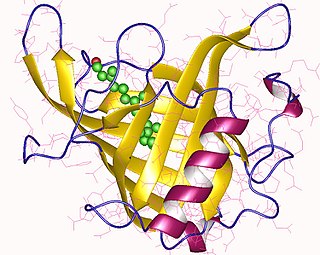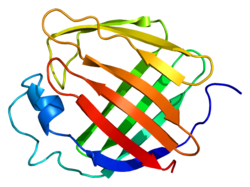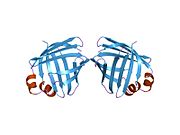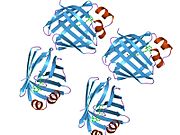
Vitamin A is a fat-soluble vitamin and an essential nutrient for animals. The term "vitamin A" encompasses a group of chemically related organic compounds that includes retinol, retinal, retinoic acid, and several provitamin (precursor) carotenoids, most notably beta-carotene. Vitamin A has multiple functions: it is essential for embryo development and growth, for maintenance of the immune system, and for vision, where it combines with the protein opsin to form rhodopsin – the light-absorbing molecule necessary for both low-light and color vision.

Retinoic acid (used simplified here for all-trans-retinoic acid) is a metabolite of vitamin A1 (all-trans-retinol) that mediates the functions of vitamin A1 required for growth and development. All-trans-retinoic acid is required in chordate animals, which includes all higher animals from fish to humans. During early embryonic development, all-trans-retinoic acid generated in a specific region of the embryo helps determine position along the embryonic anterior/posterior axis by serving as an intercellular signaling molecule that guides development of the posterior portion of the embryo. It acts through Hox genes, which ultimately control anterior/posterior patterning in early developmental stages.

Retinol binding protein 4, also known as RBP4, is a transporter protein for retinol. RBP4 has a molecular weight of approximately 21 kDa and is encoded by the RBP4 gene in humans. It is mainly, though not exclusively, synthesized in the liver and circulates in the bloodstream as a hepatokine bound to retinol in a complex with transthyretin. RBP4 has been a drug target for ophthalmology research due to its role in vision. RBP4 may also be involved in metabolic diseases as suggested by recent studies.
In enzymology, a retinol dehydrogenase (RDH) (EC 1.1.1.105) is an enzyme that catalyzes the chemical reaction

Retinoid X receptor alpha (RXR-alpha), also known as NR2B1 is a nuclear receptor that in humans is encoded by the RXRA gene.

Retinoic acid receptor alpha (RAR-α), also known as NR1B1 is a nuclear receptor that in humans is encoded by the RARA gene.

Insulin-like growth factor-binding protein 5(IBF-5) is a protein that in humans is encoded by the IGFBP5 gene. An IGFBP5 gene was recently identified as being important for adaptation to varying water salinity in fish.

Fatty acid-binding protein 2 (FABP2), also known as Intestinal-type fatty acid-binding protein (I-FABP), is a protein that in humans is encoded by the FABP2 gene.

Cyclic AMP-dependent transcription factor ATF-1 is a protein that in humans is encoded by the ATF1 gene.

Laminin subunit alpha-1 is a protein that in humans is encoded by the LAMA1 gene.

Cellular retinoic acid-binding protein 2 is a cytoplasmic binding protein that in humans is encoded by the CRABP2 gene.

Retinaldehyde-binding protein 1 (RLBP1) also known as cellular retinaldehyde-binding protein (CRALBP) is a 36-kD water-soluble protein that in humans is encoded by the RLBP1 gene.

Retinol binding protein 1, cellular, also known as RBP1, is a protein that in humans is encoded by the RBP1 gene.

11-cis retinol dehydrogenase is an enzyme that in humans is encoded by the RDH5 gene.

Adrenal ferredoxin is a protein that in humans is encoded by the FDX1 gene. In addition to the expressed gene at this chromosomal locus (11q22), there are pseudogenes located on chromosomes 20 and 21.

Retinoic acid receptor responder protein 3 is a protein that in humans is encoded by the RARRES3 gene.

Cellular retinoic acid-binding protein 1 is a protein that in humans is encoded by the CRABP1 gene.

Retinol-binding protein 3, interstitial (RBP3), also known as interphotoreceptor retinoid-binding protein (IRBP), is a protein that in humans is encoded by the RBP3 gene. RBP3 orthologs have been identified in most eutherians except tenrecs and armadillos. A horizontal gene transfer from bacteria has been proposed to explain the evolution of the eye in chordates.

Lecithin retinol acyltransferase is an enzyme that in humans is encoded by the LRAT gene.

Retinol-binding proteins (RBP) are a family of proteins with diverse functions. They are carrier proteins that bind retinol. Assessment of retinol-binding protein is used to determine visceral protein mass in health-related nutritional studies.


























